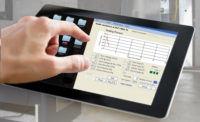The right tools in the right hands can make all the difference when it comes to home-performance services. Rob Falke, president of the National Comfort Institute Inc. (NCI) and a leading voice in the home-performance industry, provided a list of the tools required to be successful in home-performance work as defined by NCI.
“Since the mechanical system that consumes the most power in a home is the HVAC system, it needs to be tested and improved first,” Falke said. “As our motto says, ‘When it comes to home performance, if you don’t measure, you’re just guessing.’”
The tools Falke recommends are:
• A commercial-grade air-balancing hood to measure grille airflows from 25 to 2,500 cfm;
• A low-pressure digital manometer with accessories, including a drill bit, tubing, static pressure tip, and test site plugs, to test and diagnose air pressure from 0 to 1 inch water column;
• An anemometer to measure air velocity;
• An electrical meter to read amps, volts, and ohms;
• A set of calibrated digital hygrometers to measure wet bulb and dry bulb temperatures;
• An infrared camera to measure and document thermal bypasses;
• A carbon monoxide analyzer to measure ambient CO and CO in appliances;
• A residential blower door and accessories to test building envelope leakage;
• A gas leak meter for identifying gas leaks;
• A basic set of HVAC hand tools and a light source; and
• Step and extension ladders.
FAVORITE TOOLS
The NEWS spoke with several HVAC contractors who are engaged in home-performance work and asked them about their favorite home-performance tools, as well.
According to Rob Basnett, president of Basnett Plumbing and Heating in Littleton, Massachusetts, the essential home-performance tool is a dual manometer.
“If you want to check static pressures, you must have a dual manometer,” he said, “I wouldn’t go without it under any circumstances.”
Basnett recalled a recent call when his company helped a customer who had a gas boiler with a power burner. The boiler would shut down every so often, and the servicing contractor prior to Basnett couldn’t figure out why. Basnett Plumbing and Heating inherited this customer, and the issue turned out to be a problem with the room pressure where the boiler was located.
“If you didn’t have a dual manometer, you’d have no idea what was going on,” Basnett said.
In addition, Basnett is a fan of flow hoods, and his company offers Aeroseal duct sealing.
“Most people don’t want you to tear out their ceilings to seal their ductwork,” he said. “Aeroseal allows us to offer a solution to customers who have leaky ductwork that’s not accessible because it’s buried in the ceiling.”
The favorite home-performance tool for the crew at Pippin Brothers Home Services in Lawton, Oklahoma, is the flow hood.
Co-owner Mark Pippin said his company’s salespeople use flow hoods to put on an educational show for prospective customers.
“Salespeople can be hard to train, but once they catch on, they’re dangerously effective,” Pippin said. “We use the flow hood as a selling tool and as a way to gather information. We get customers involved by letting them help us measure the supply and return, and we educate them that those two values should be equal. Of course, when we run the numbers, we usually find between 55 and 60 percent leakage — that’s how bad most duct systems are. So, we start with the flow hood, and then we talk about other home-performance measures, such as insulation and air sealing.”
Pippin added that customers also like to be there to help get the flow hood results after the work on their homes is completed.
Joe Hall, owner of Joe Hall Energy Consulting LLC in Lakewood, Colorado, has several preferred tools for home-performance contracting, but his favorite is the human brain.
“There’s no substitute for training and certification and technicians using their minds and experience,” Hall said. “The first and most important tool is the brain. You have to look beyond the box and find out what the real problems are in a structure. As far as physical tools, I recommend a blower door and an infrared camera to help you identify issues related to air leakage, a combustion analyzer to help you properly assess the combustion appliance zone for safety, and duct-testing equipment to ensure conditioned air is going where it should.”
Publication date: 10/10/2016
Want more HVAC industry news and information? Join The NEWS on Facebook, Twitter, and LinkedIn today!








